Alex Constantine - March 15, 2010
Forensic Evidence Supports Marine’s Murder
by Robert ODowd | www.veteranstoday.com | March 3, 2010
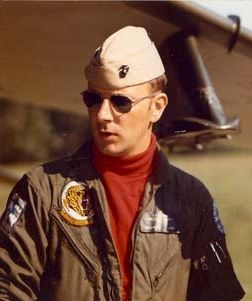 Colonel James Sabow, USMC. Former attorney supervisor in Orange County District Attorney’s office said the Marine officer was injured by a blow to the head, and while unconscious suffered a shotgun blast in the mouth. U.S. Justice Department passed responsibility to California. Jerry Brown, California’s Attorney General, needs to pursue investigation.
Colonel James Sabow, USMC. Former attorney supervisor in Orange County District Attorney’s office said the Marine officer was injured by a blow to the head, and while unconscious suffered a shotgun blast in the mouth. U.S. Justice Department passed responsibility to California. Jerry Brown, California’s Attorney General, needs to pursue investigation.
(IRVINE, CA) – The murder of Colonel James Sabow is the story of the loss of our country’s moral compass. Mounting evidence strongly indicates that “Thou shall not kill” was ignored to support the Contra War in Nicaragua and to protect the “butts” of those involved in bringing cocaine into the U.S. on former military aircraft.
The overwhelming forensic evidence supports murder of a senior Marine Officer to prevent him from ‘telling all’ at a courts martial.
In an unexpected move, the U.S. Department of Justice (DOJ) passed jurisdiction to the state of California almost 4 years ago. No action has been taken by Orange County where former Marine Corps Base El Toro, CA, is located.
The murder of Colonel James Sabow, Assistant Chief Staff, MCAS El Toro, CA, on January 22, 1991, was done in his quarters on a major Marine Corps base. The Orange County coroner ruled suicide before an investigation was completed. Subsequent independent investigations by scientific experts support murder. As expected, investigations by the Navy and the Department of Defense supported suicide.
Oliver Stone, check your voice mail! The Colonel Sabow story has all of the right ingredients for an Academy award winner. Marines, drugs, war, murder, CIA, government cover-up to name a few. It even has a made to order hero. He may not be comfortable with this, but Dr. David Sabow, brother of Col. Sabow, is the one who has carried this fight for almost 20 years.
Dr. David Sabow, South Dakota neurologist, has devoted years to investigating the murder of his older brother. He’s spent several hundred thousand dollars in legal fees, private investigators, and much of his own time and energy. Now in physically poor health, he’s confined to a wheel chair and no longer in medical practice.
In his own words, “he became suspicious of foul play due to a number of inconsistencies. He shared his concerns with the NCIS [Naval Criminal Investigative Service], as well as a number of senior Marine Corps officers. He became ever more suspicious when relevant documents, including the autopsy report were denied him by the Marine Corps.
Having become aware of Dr. Sabow’s concerns, El Toro base commander, Brig. General Tom Adams summoned him to El Toro for a meeting. Dr. Sabow accompanied by Sally Sabow, the Colonel’s widow, sat through a 5-hour vicious and grueling session. Dr. Sabow was assured that Colonel William Lucas who was the chief legal officer at El Toro at the time his brother’s death, would be present to answer pertinent questions that bothered the Sabow family.
However, in his place, Colonel Wayne Rich, a Reserve Marine Corps officer, took his place. Wayne Rich turned out to be a special Assistant Attorney General from Washington and he dominated the meeting.
Both General Adams and Colonel Rich accused Colonel Sabow of being a “crook and felon” while two other Marine Corps generals in attendance, David Shuter and J.K. Davis remained silent. This, in spite of their glowing “Fitness Reports” of Colonel Sabow during his almost three decade career. Furthermore, the representatives of the NCIS, as well as General Adams and Colonel Rich, repeatedly stated: “There was not one shred of evidence, other than that proving, that Colonel Sabow committed suicide.”
For the most part, Congressional committees have not been interested in Colonel Sabow’s death or in any testimony from Dr. Sabow.
Dr. Sabow told us one instance where he was cut off from making remarks before a Congressional committee, “I was accompanied by Danny Sheehan [his attorney] on Sept 12, 1996, when I gave time restricted testimony at a Senate hearing chaired by Senator Dirk Kempthorn (R-Idaho). Following statements proffered by me and several others about military suicides, the various heads of criminal investigations for all the branches of the armed services gave their unrestricted “speeches” about how thorough they were. After they were finished Dirk Kempthorn invited each and everyone of them to make a closing statement. I was incensed that they had all the time they wanted for their addresses and now were given even more time of which they all took advantage. After they finished, I tried to stand and demand equal time for rebuttal. Kempthorn banged his gavel louder and louder to get me to be quiet. I refused but in the excitement I fell to the ground. I could not get up. Danny knelt next to me. Kempthorn and several other Senators walked off the elevated dais toward the audience which took several of them right past me. Not only did they not stop to help me, but Kempthorn and some others stopped 10 or 15 feet from where I was on the floor and started a conversation with General Krulack, CMC. I could not help but notice Krulack and others glance at me on the floor. Two big security guards arrived with a wheelchair a few minutes later and stayed with me until they helped me into a taxi outside the Hart Senate Building. Both were large, strapping black men who complimented me on my testimony.”
The Marine Corps has a proud tradition of never leaving anyone behind. The tragic death of Colonel James Sabow gave an entirely different meaning to Semper Fidelis. Colonel Sabow never gave any serious thought that his life and that of his family were at risk. He was an outstanding Marine fighter pilot. By all accounts, he was general officer material.
Born in Pittsburgh, PA, on August 5, 1939, Colonel Sabow was by every conceivable measure a highly successful Marine Corps officer with every reason to live. One of three boys whose father had been an Army flight surgeon in WW II, he graduated from Georgetown University in 1962 and was commissioned in the Marine Corps in 1963. Married to the same woman for twenty-three years, the father of two children, he was in excellent physical and mental condition and at the time of his death was worth an estimated two to three million dollars according to his brother. After receiving his wings, he was assigned to an A-6 Intruder squadron in Vietnam, flew 221 combat missions, earning the Bronze Star with Combat “V” and 15 Air Medals. All of his Marine Corps fitness reports were outstanding.
There’s no question that if his life was in danger, he would have been prepared to defend himself. Since he was in government quarters on a Marine Corps base, he made the tragic mistake of letting his guard down and not taking his own advice. In the later part of 1987, Colonel Sabow, concerned about the use of drugs at El Toro and Tustin, asked Captain Pete Barbee, a Mustang [former enlisted Marine], to investigate the use of drugs on the base but “not to trust anyone.” Had he taken his own advice he may have been alive today.
General David Shuter gave a glowing eulogy of Colonel Sabow, in which he described him as a man “without compromise,” one of the few who could give himself fully to the Corps and country and simultaneously to his family. He also described Sabow by all those in the Corps who knew him as the “straightest of straight arrows.”
Contra War
During the Reagan administration, a civil war or Contra war raged in Nicaragua, pitting the left-wing Sandinista regime against CIA-financed Contra rebels. The war covered the period roughly from 1981 to 1990.
A series of CIA supported acts of sabotage without Congressional intelligence committees approval led to the passage of the Boland Amendment, which cut off appropriated funding for the Contras.
The funding of the Contra war was secured by the sale of drugs, especially cocaine which spread to epidemic proportions in the U.S. with the introduction of cheap crack cocaine in the inner cities.
For the most part, our government looked the other way, allowing the drugs to be sold, killing an untold number of citizens. Many of these were black Americans from the ghettos. If you’re still unsure, just ask Congresswomen Maxine Waters, (D, CA). She can tell you from personal experience the tragic impact crack cocaine had on black Americans in Los Angeles.
“Cocaine is a powerfully addictive stimulant drug. The powdered hydrochloride salt form of cocaine can be snorted or dissolved in water and then injected. Crack is the street name given to the form of cocaine that has been processed to make a rock crystal, which, when heated, produces vapors that are smoked. The term “crack” refers to the crackling sound produced by the rock as it is heated,” according to the National Institute on Drug Abuse.
Congresswoman Maxine Waters knows all too well the disastrous health effects on those to become addicted to crack cocaine. According to Congresswoman Maxine Waters, “The time I spent investigating the allegations of the “Dark Alliance” series [Gary Webb’s account reported in the San Jose Mercury News in 1996] led me to the undeniable conclusion that the CIA, DEA, DIA, and FBI knew about drug trafficking in South Central Los Angeles. They were either part of the trafficking or turned a blind eye to it, in an effort to fund the Contra war. I am convinced that drug money played an important role in the Contra war and that drug money was used by both sides.”
Dr. Sabow met with Maxine Waters in 1996. He told us that: “I appeared with Maxine Waters at a rally that was organized by a group headed by Mike Rupert. The group flew me to LAX and drove me to a small house in South Central where I met others who were to speak at the rally on the following day. We spoke from the steps of the LA Municipal Bldg (I call it the Dragnet Building) and then marched in downtown LA for a few blocks. The park in front of the Municipal building was crowded with people from South Central. Still being naive, I thought it quite odd that the LA Times did not cover it to any significant degree. It was at this time that I met Cellerino Castillo. Celli showed me photographs of C-130 aircraft at the Ilipango Air force Base in El Salvador being loaded with drugs. He was the chief DEA agent in all of Central America at the time. He tried to blow the whistle and was blackballed and ruined. I had a long talk with him at that house on the night before the rally. Maxine Waters made a stink about the Drug issue when she returned to Washington. John Deutsch was DCI under Clinton and he sent his IG out to LA. After he returned Deutsch made a statement that there was no foundation whatsoever that the CIA was involved in drug trafficking or knew anything about such activity (surprise, surprise).”
The sad truth is that thousands of African-Americans in Los Angeles, Chicago, New York, New Orleans, Philadelphia, Houston, San Diego, Baltimore, and other urban centers became addicted to crack cocaine, lost their minds, were incarcerated, and died from overdoses.
Guns Down and Drugs Up
Former military aircraft leased to CIA proprietary companies transported guns to Central America. On the return trips, these aircraft carried cocaine into the U.S. MCAS El Toro was one of the bases in the ‘80s and early ‘90s used to offload the cocaine and service these civilian aircraft.
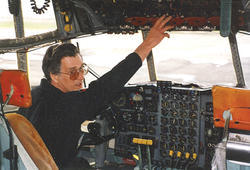 Tosh Plumlee in Santa Elena, Costa Rica, mid-1980s
Tosh Plumlee in Santa Elena, Costa Rica, mid-1980s
Based on interviews with William Robert “Tosh” Plumlee, a former CIA contract pilot, Nick Schou, OC Weekly reporter, wrote about the secret flights into El Toro and the ‘suicide’ of Colonel Sabow in September 2006. See: “Cocaine Airways” at http://www.ocweekly.com/2006-09-14/news/cocaine-airways/.
According to Nick Schou, “All of Plumlee’s landings were late at night, and the unmarked airplanes—massive C-130 cargo carriers—were painted dark green. And though Plumlee landed at military installations, the men who unloaded his planes were dressed just as he was—in civilian attire, sporting long hair. Plumlee says he guesses they could have easily passed for drug dealers.”
Plumlee told Schou that the “the pilots officially worked for civilian air charters under contract to the CIA, including the infamous Southern Air Transport and Evergreen International Airlines. He was always paid in cash, usually about $5,000 per flight. Once he landed at El Toro, Plumlee says, he’d taxi the C-130 to the southwest side of the field, close to Interstate 5. “I had long hair in those days—bushy hair,” he says. “I looked like a drug runner. There was nobody in uniform offloading our aircraft. I figured they were CIA spooks. When you see people like that on a military base in the early morning, unloading, I say that’s CIA. It’s an assumption on my part, but it is based on a preponderance of evidence.”
Apparently, the Marine Corps Inspector General knew something about the misuse of former government aircraft, too. In January 1991, Lieutenant General Davison, the Marine Corps IG, arrived at MCAS El Toro, skipped the entrance conference with Brigadier General Tom Adams, El Toro’s Commanding General, and went immediately to Building No. 53. He asked for the data processing file on civilian aircraft (containing records for refueling and other servicing of civilian aircraft at El Toro). The file had been purged.
According to Dr. Sabow, Colonel Sabow would have known of the ‘legal’ shipment of weapons to Central America, but not the use of these aircraft to illegally carry cocaine into the U.S.
After the IG arrived at El Toro, Colonel Sabow was relieved of command for a minor infraction of carrying personal items to his son while making a routine flight on board a military aircraft.
“Retired Assistant Commandant of the Marine Corps Major General J.K. Davis said that any pilot who had ever flown in the military would be canned had they been held to the same standards as the allegations against Colonel Sabow,” according to David Hoffman in “Semper Fidelis: “The Story of Colonel James E. Sabow.” See: http://www.american-buddha.com/semper.fidelis.htm#fn2.
Dr Sabow said that when Colonel Sabow learned of the illegal shipment of cocaine in January 1991 from Colonel Joseph Underwood, his immediate boss and Chief of Staff, MCAS El Toro and next door neighbor, he objected and told Underwood that he would choose to tell all at a courts martial rather than retire early under a cloud. In refusing to retire early, Colonel Sabow unknowingly signed his own death warrant.
Sara Sabow said that the night before her husband was killed Colonel Underwood, pointing his finger in Colonel Sabow’s face said, “You will never see a courts-martial.” He was right. Colonel Sabow was murdered the next morning.
Forensic Evidence
As part of his effort to document the scientific support for murder Dr. Sabow and Bryan R. Burnett, Meixa Tech, Cardiff, Ca, wrote a paper entitled, “Pathological and Physiological Principles of Instantaneous Death: How It Can Help Distinguish Suicide from Homicide” as part of the effort to document the murder of Colonel Sabow. See: http://colonelsabow.com/home.html.
In the paper’s abstract, Dr. Sabow and Burnett wrote that: “The body of a Marine Corps officer was discovered lying on a 12 gauge shotgun in the backyard of his home. Naval Investigative Service personnel identified an intraoral wound and immediately informed the base commander and the victim’s family that the death was a suicide. The following day an autopsy was performed and death certificate issued, designating death as suicide. The purpose of this paper is two-fold: to distinguish the difference between instantaneous and sudden death and its application in distinguishing homicide from suicide and, secondly, to propose that the death certificate in any unwitnessed traumatic death should be considered a preliminary document until there is comprehensive evaluation of all evidence. The correct conclusion of death in this case requires understanding of physiologic principles which determine when death is instantaneous as opposed to sudden. If the initial trauma to the officer was the shotgun wound, then death had to have been instantaneous. However, autopsy results, skull x-rays and crime scene evidence demonstrate that death was sudden but not instantaneous. The initial trauma was a fatal blow to the back of the head causing a depressed skull fracture behind the right ear. Therefore, the manner of death was homicide not suicide.”
Evidence supporting homicide:
CIRCUMSTANTIAL
|
PHYSICAL
OTHER
|
Intimidation Tactics Used on Others
The use of intimation to scare people has been used since the beginning of time. Cain may have even resorted to this before killing Abel.
Gary Null in an internet article, “The Strange Death of Colonel Sabow” described documentation sent to Dr. Sabow from a Marine Corps source that supports the attempt to intimidate Dr. Sabow and the Colonel’s widow during the March 9th meeting:
“The most damaging evidence was a five-page hand-written summary by Wayne Rich. By this time, David knew that Rich was an Assistant Attorney General from Washington, who replaced Colonel Lucas at the March 9 meeting. These notes were written by Rich during a telephone conversation with the deputy SJA in Washington, Colonel Lang, on the day before the El Toro meeting, and included statements such as: “We are about to try to convince Sabow’s brother that his brother was a crook and so big a crook…”
“The packet also contained an order from one legal officer to another regarding the investigation of ways to have Dr. Sabow’s medical license revoked.”
“There was also a copy of a memorandum written by the head legal officer, SJA Colonel Lucas. The memorandum was in reference to the peculiar behavior of Lieutenant General Hollis Davison, the Inspector General of the Marine Corps, during an investigation into Colonel Sabow and Colonel Underwood at El Toro from January 10 until January 17, 1991, days before the murder. Lucas talked about the repetitiveness of the Inspector General’s questions, and his peculiar behavior while conducting his interviews. The last paragraph of Lucas’ memorandum stated that he put this into his personal files to protect himself for the future. He stated that if the Inspector General’s behavior became public, it would be very bad for the Marine Corps.”
“There was also a memorandum from Captain McBride to Colonel Lucas. The memo reported conversations between McBride and Dr. Sabow. This order was from Rich or Adams ordering McBride to divulge confidential information, and violated the trust of the attorney-client relationship.”
“The packet also included transcribed responses of “witnesses” interviewed by the IG in an attempt to depict Colonel Sabow’s misconduct. There was a glaring omission in the transcription–the questions asked of those “witnesses.” Dr. Sabow learned that at least one person interviewed, Major Bob Friend, would not sign the transcript because the statements did not reflect his responses.
Tosh Plumlee, the former CIA pilot who told of drugs into El Toro, knows from experience the intimidation tactics used to keep you from talking. In a 2006 interview with Nick Schou of the OC Weekly, Tosh said he’s been beaten, shot at, and stopped on the street by strangers who flashed ’badges’ who told him. “We just want to let you know that you’re being investigated for making false allegations against the government.
After being attacked in Evergreen, Colorado, Tosh said, “I got pretty well beat up and the Evergreen Police Department never showed up Plumlee says. “And I drove home and that’s when I see my house is on fire.” Neighbors were able to retrieve Plumlee’s dogs from the house, but most of his belongings—including his documents and partially written manuscript—went up in flames. “There was a hole in the window, and accelerant was all over the place,” he says. “It was firebombed. Who was behind it? Was it the CIA? The Cubans? I have no idea.”
The ultimate intimation is death. Tom Wade, the young Marine sergeant who reported the file purged to the Marine Corps IG in January ‘91, was later transferred to a base in Florida and killed execution style with two shots to the back of his head on Christmas Eve several years later. His six year old daughter was found by an elderly couple the next morning, crying in the back seat of her father’s car. Nothing was taken from his car or his person. A follow-up call to the local police by Dr. Sabow revealed that Tom Wade’s apartment was sealed by military authorities who cited national security as the reason for securing the area for several days.
In November 1996, a patient of Dr. Sabow signed an affidavit stating that she had been pressured by someone claiming to be a DEA agent who told her that if she agreed to assist them in the prosecution that no charges would be brought against her for altering prescription refills. She refused to cooperate since Dr. Sabow had not done anything wrong. Portions of the affidavit are redacted to protect the identity of the patient and others:
“_____________I am presently a patient of John David Sabow, M.D. I have been a patient of Dr. Sabow’s for these purposes as far back as l994.”
“In March of 1994, I received a prescription form Dr. Sabow, which I subsequently altered so as to increase the number of refills that I could obtain from the drugstore. In In JuIy of 1994, I needed to speak to Dr. Sabow and he was out of town. I then went to the emergency room and they gave me a prescription which I subsequently altered also. However, I took the prescription from the emergency room to the drug store and the druggist on duty________________noted that I had altered the prescription____________________called the emergency room physician and subsequently the police. I was arrested. When my case came before Judge__________________, he dismissed the charges for a failure to properly state a violation of a crime. A month later, I received a letter indicating that the matter had been dropped.”
“A year later in 1995, I received a telephone call from a gentleman representing himself as a DEA agent. He claimed that I had witnessed a crime and wanted to know if he could come to my house to discuss the same. I consented and gave him directions to my home. He showed up with another agent and once they got into my home, one agent took my husband in one room and another agent took me in another room and began to interrogate me.”
“They indicated that they had a list of all of the prescriptions that I have obtained in the last five years. The list was quite lengthy. On the list, they had certain prescriptions circled or identified.”
“The agents then advised me that I had five possible felonies and that if I wanted to assist them in the prosecution of Dr. Sabow, they would see to it that no charges were brought against me. I told the agents that I could not enter into such an agreement because if I did so, I would be lying. I am not addicted to any medication. Even if I were, it would not be Dr. Sabow’s fault and I so informed the agents.”
“In December of 1995, I received a telephone call from the…sheriff asking me to come into his office. When I arrived, I was presented with a warrant for my arrest.”
“I posted a $750 bond and in April of 1996, the matter was resolved when I plea bargained and eventually pled guilty to one of the two counts. By this time, the state had identified and discovered the alterations that I had made on the emergency room prescription, as well as on the prescription I received from Dr. Sabow. I was fined and put on two years, probation. It was my understanding in the plea bargain that a plea of guilty would take care of any and all prior offenses that had to do with prescription drugs and or narcotics. In November of 1996, I was again contacted by the same DEA agents. They came to my home; however, this time when they asked for permission to come in, I refused. we conducted our conversations and business on the front porch. The DEA agents again informed me that they had access to at least five felonies concerning drugs and that I was in no position to refuse to assist them since they were cognizant or aware of the fact that I was presently on probation. The agents again advised me that they wanted my assistance so as to get Dr. Sabow (who is the individual they claim had prescribed the medication and caused my alleged addiction). I again told them that I would have no part in this type of discussion and I asked them to leave.”
Justice Dept. Gives California Jurisdiction
The U.S. Department of Justice is content with the official questionable suicide finding and passing off the jurisdictional responsibility to State of California, even though the crime was committed on Federal property.
The State of California and the U.S. Department of Justice (DOJ) appear to be playing a kind of jurisdictional musical chairs and the only one left standing is Dr. Sabow.
It’s obvious that neither the state of California or the DOJ wants anything to do with investigating the murder of Colonel Sabow. The Orange County coroner performed the autopsy and signed the death certificate in January 1991. The cause of death was suicide according to the coroner.
Subsequent investigation by a number of independent medical experts of the forensic evidence concluded that homicide was the cause of death.
The California Bureau of Investigation under the Attorney General’s office advised Dr. Sabow on December 26, 2002, that “as you are aware a determination was made several years ago the state of California has no jurisdiction to conduct an investigation as the result of Colonel Sabow’s death having occurred on property under the jurisdiction of military authorities.”
Almost 5 years later, the DOJ in a letter of July 6, 2007, to Congressman Duncan Hunter passed the buck back to the California Attorney General. According to the DOJ, “…the investigation of his death appears to be a state matter and not within the jurisdiction of the Department of Justice. Dr. David Sabow may wish to direct his inquiry to the Attorney General’s Office for the State of California and other state law enforcement authorities for further assistance.”
Attorneys Agree Colonel Murdered
Michael A. Jacobs, attorney and retired supervisor of the Orange County District Attorney’s Homicide Trials Division, believes that homicide is supported by the (1) compressed fracture to the right rear occipital skull and the resulting hemorrhaging beneath the skull and (2) the large amount of aspirated blood found in the alveoli of Colonel Sabow’s lungs. Mr. Jacobs concluded in a letter to Congressman Duncan Hunter that “Colonel Sabow’s death could not have been a suicide but had to have been a homicide inflicted by the hands of another.”
Additional support comes from Lt. Col. Anthony Verducci, a Marine Corps JAG [attorney] who was stationed at MCAC El Toro in 1991. In a letter to Dr. Sabow, Verducci said, “I have reviewed x-rays, crimes scene photos, and letters submitted by forensic pathologists and other experts about Col. Sabow’s death…these materials lead me to believe that Colonel Sabow did not die of a self-inflicted gunshot wound [my emphasis]. As a Marine, former prosecutor, and citizen, I believe that an impartial law enforcement agency must review this case.”
California’s Attorney General Needs to Investigate
Jerry Brown, check your email. Jerry Brown, the California Attorney General has a well deserved reputation for taking on tough issues. Dr. Sabow and several world class scientists are willing to provide whatever information you need to conduct an independent investigation of Colonel Sabow’s death. The Justice Department passed the responsibilty for investigation to California; Orange County authorities have not pursued the investigation. Colonel Sabow’s death may be a ‘cold case’ but, there’s no statute of limitation on murder.
http://www.veteranstoday.com/2010/03/03/forensic-evidence-supports-marine-murder/
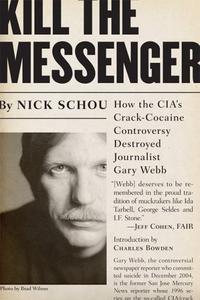





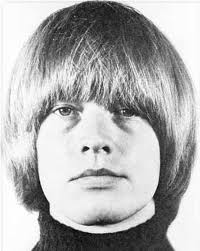

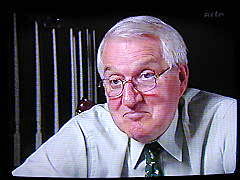
Colonel James Sabow, USMC (In Memorial)
Murder is without a doubt a very extreme, coldhearted, cowardly deed,
So, it usually deals with jealously, selfishness, immorality and/or greed,
Here’s a death planned by criminal masterminds of the highest degree,
That of Colonel James Sabow, an Assistant Chief Staff in the “USMC.”
General David Shuter stated at his eulogy a man, “without compromise,”
Oh no doubt it made the good colonel expendable in the enemy’s eyes,
However, what makes this chilling assignation is that stunning surprise,
“Straightest of Straight Arrows,” was claimed to have committed suicide.
Forensic evidence supports murder of this brave officer in the year 1991,
Marine Corps Air Station in El Toro, Ca., when an investigation was done,
OK, but done by whom because solid clues point to a suspicious demise,
Done in sunny California, autopsy’s tough with sunglasses over your eyes.
Shootings have their own distinct characteristics & this one is not immune,
Type of weapon, make of the caliber, time of day, location, January or June,
Knowing a shotgun that caused the death leaked GSR yet none was found,
On the colonel’s hands or clothes, the medical examiner is Bozo the Clown?
Really? There is proof of cocaine being smuggled on former military ships?
Support the Nicaragua Contra-War? You know what’s said about loose lips,
Orange County Coroner ruled suicide before an investigation was complete,
A chilly January 22 in his quarters on a Marine Corps base, nice and neat.
Many subsequent independent experts have concluded, assured foul play,
The U.S. Navy & DOD continue to stand firm on, No!” it didn’t occur that way,
Dr. David Sabow, a South Dakota neurologist has carried this fight 20 years,
Not quite but it will be for he has no thought of quitting to remove the smear.
And restore the good colonel’s honor rightly deserved & patriotically earned,
Dollars in legal fees, private investigators, own time, energy, truth to be learned,
Ha, no matter that our own government vehemently resists him at every turn,
Eagles on a highly decorated Marine’s lapel will not allow him to crash & burn.
This brother-friend of the hero is now in failing health but he does not care,
Amidst odds of high improbability he continues fighting from his wheelchair,
If only Cain had loved Able like that, there would not be cause for this write,
The purest form of brotherly love ignores their needs continuing to sacrifice.
Hard to imagine weapons-& drug-smuggling activities at a U.S. military base,
But not hard to imagine the calculated demise of a hero officer to save face,
Many glowing “fitness reports” even by general’s during his almost 30 years,
221 combat missions, 15 Air Medals, Bronze Star with Combat “V” and no fear.
The biggest question, why in the hell would this proud father of two take his life?
Leave without rhyme, reason and comforting answers to Sally his loving wife,
James never turned down an assignment, Ooh-Rah Brave Colonel, Semper-Fi,
For the pride and decency of your country and morals, Sabow you had to die.
How many crooked hands high above yours were immersed in the illegal pie,
Could be alive today officer, “I know, I know, but Jim, it would only be one lie,”
Say that again, “one lie is all it takes to destroy 29+ years of hard earned work,”
“Yeah that’s true however, it was only you and your family who have been hurt.”
Personally, I’m surprised at the incompetence & excuses by the NCIS of the Navy,
Obviously they only do good police work with Mark Harmon @ 8 P.M. on my TV,
A battle only temporarily lost because the war of Armageddon will soon be done,
Besides, who has the right to question the Father why He called home His son.
Rest assured beyond are deepest thought the Creator has many, many reasons,
Some are here only to assist heaven’s kingdom growth, in very limited seasons,
Although there is an abundance of earthly leaders we still only have 1 real King,
I heard God say, “Colonel, it’s just for you to pilot, My fastest bolt of lightning.”
by Luke Easter & Tim King